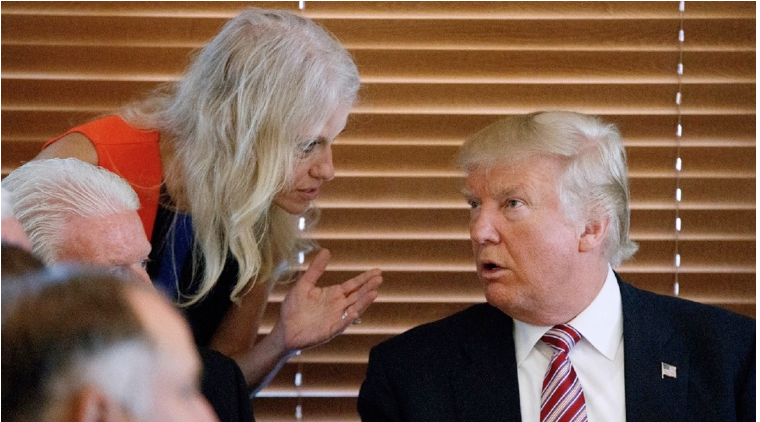Millennial Myths about Market Magic (when it comes to Measure S)
PLATKIN ON PLANNING-In writing and speaking about Measure S, the Neighborhood Integrity Initiative, I have recently encountered an emotionally charged argument that Measure S is a ruse by old geezers (baby boomers like myself) living in single-family homes. Apparently the boomers want to maintain their property values at the expense of Millennials -- that is, the 20 and 30 somethings. Curiously though, the old geezers who own and run the four large real consortiums funding the opposition to Measure S and devising the anti-S arguments repeated by these Millennials play no role in this imaginary generational conflict.
While one of the great lessons from the recent presidential election was the enormous support from Millennials for the two most progressive candidates, Senator Bernie Sanders and Dr. Jill Stein, these anti-S Millennials are apparently outliers. Their belief, nevertheless, that market magic can cure urban ills -- especially overpriced rental housing, poor job creation, and inadequate transit ridership -- needs to be addressed.
In their view, since Measure S jump-starts LA’s legally required but moribund General Plan process, and then reinforces the new plans with well-defined rules on how developers can adulterate them, these strengthened land use regulations will stymie vast market forces. If unleashed by even more deregulation, the private market will create a cornucopia of cheap housing and alternative transportation modes for Millennials.
As a parent of two Millennials, let me explain why this bewildering belief in market magic, which we usually associate with Garcetti-type neo-liberal politicians and their developer patrons, is bunkum. Whatever their ages, those who have drunk this Kool-Aid only need to look outside their apartment or house windows to debunk these market magic myths. In LA, they will see what happens when private greed substitutes for rational city planning: homeless encampments, billboards and super-graphics, McMansions in the shadows of luxury towers, crumbling sidewalks, a patchwork of risky bike lanes, gridlocked streets full of potholes, widespread building code violations, demolition of rent stabilized apartments, illegal evictions, sagging overhead wires, treeless boulevards, and barely paved alleys filled with discarded couches.
Then, it they go to City Hall, they will see pay-to-play politics on open display at the City Council. There, every big real estate project, such as the Caruso luxury tower near the Beverly Center, obtains its special spot-planning and spot-zoning ordinances by a consistent 15-0 margin. For them, the LA Times exposes of developer contributions to elected officials to obtain land use entitlements barely registers.
I suppose a few people, whatever their age, welcome these byproducts of deregulation, but most of those opposing Measure S, including Millennials, have not yet come to terms with what actually lies ahead if Measure S fails.
They will rediscover LA’s status quo. Their expected rosy future will be nothing more than the broken present that the corporate funders of anti-S ads wish to maintain. It is the dystopia we already live in, not the utopia they imagine will result from the full-on deregulation of private land in Los Angeles.
The plethora of affordable market housing and low income housing that the anti-S corporate funders promise is just a ploy. It will not appear because, like today, developers want to maximize their profits. That is why they build luxury housing and then repeatedly claim – despite zero evidence – that these unaffordable units actually create affordable housing through filtering and over-supply.
This is why I have also previously suggested that anyone who seriously believes that market magic is a panacea for Los Angeles should screen Bladerunner. (Photo, above) It is an extreme, free market vision of the dystopia we already live in.
Why ‘market magic’ does not work in Los Angeles
Los Angeles is already a city with virtually no effective regulation of land. Yes, land use laws and regulations are still on the books, but they are peripheral to day-to-day decision-making and code enforcement. Nearly every waiver from LA’s legally adopted plans and zoning sails through in unanimous votes, including the spot-zone changes and the spot-General Plan Amendments that the City Council routinely grants through special ordinances.
As for LA’s rampant violations of the City’s zoning and building codes, it up to residents to phone them into the Department of Building and Safety (LADBS). Once there, they apparently disappear into a time warp because nothing ever happens. Developers therefore know they can game the permitting and inspection system because the LADBS code enforcement function is in deep hibernation.
The free market apparently means developers know they are free to do whatever they want: illegal demolitions (that ignore regulations for asbestos and lead paint), billboards, supergraphics, McMansions, bootlegged signs, garage conversions, and even unpermitted remodels have become routine.
This stark reality means that any Angelenos who imagine that a free market utopia is waiting in the wings should stop believing their lying eyes. The Los Angeles they already live in reveals market magic hard at work, and it will only get worse if Measure S fails on March 7. Then, an even more deregulated Los Angeles will pull them -- including Millennials – down further. Still more expensive housing will appear when the City Planning Department, City Planning Commission, and the City Council continue to sideline the General Plan, adopted zoning, and the California Environmental Quality Act.
The free market is the culprit, not planning and zoning
As for the other part of the free market equation, economic inequality will increase when developers can build what they want, where they want, when they want through easily obtained zone variances, zone changes, and General Plan Amendments. Their underlying parcels will quickly appreciate in market value when planning and zoning restraints are removed. But this windfall does not come out of thin air; it comes out of the pockets of tenants who are painted into a corner by systematic rent increases, overcrowding, and cutbacks in public services. Of course, they are the lucky ones because they do not yet need to live in cars, garages, or on the streets.
Furthermore, the downward mobility experienced by many Millennials does not result from cities sticking to their legally adopted plans and zones. It is exactly the opposite. Apparently some Millennials have succumbed to the developers’ claims that existing zoning holds back housing construction. But, LA’s status quo already has more than enough zoning where developers could build apartments, but choose not to.
There are no legal barriers to the construction of three to five story market rate and affordable apartments on LA’s long commercial corridors. Instead, the barriers are strictly self-imposed. Such buildings are not as profitable as luxury high-rise towers with sky-high rents. The free market adored by Measure S opponents is the real culprit, not zoning and planning rules.
Final word on who benefits from the defeat of Measure S
All we need to do is follow the money since a defeat perpetuates the pay-to-play status quo in Los Angeles. That means anti-S claims about large, unplanned real estate projects (i.e., unrestrained real estate speculation) generating transit ridership, jobs, and affordable housing will be quickly exposed as the disingenuous arguments of self-serving opportunists.
While luxury high-rise towers and shopping centers are certain to appear through spot-zones and spot-plans, anyone who imagines that they will usher in these social benefits will get a harsh dose of reality. None of these imagined social benefits have appeared in the past and present, and none will appear in this future.
(Dick Platkin is former LA City planner who recently taught courses on sustainable city planning at USC and CSUN. He is also a former union officer, who worked hard to create labor-neighbor alliances in Los Angeles. Please send corrections or comments to [email protected].) Edited for CityWatch by Linda Abrams.










 We have the power to stop this administration from targeting communities of color and deporting millions of people who have known no other home than the United States.
We have the power to stop this administration from targeting communities of color and deporting millions of people who have known no other home than the United States. Yesterday was the beginning of a movement where millions of women (and men) rose up to challenge lawmakers in Washington who are trying to take us backward. This movement knows that the arc of the universe is slow, but it bends toward justice -- and it is now our responsibility to continue our work and bend it ourselves.
Yesterday was the beginning of a movement where millions of women (and men) rose up to challenge lawmakers in Washington who are trying to take us backward. This movement knows that the arc of the universe is slow, but it bends toward justice -- and it is now our responsibility to continue our work and bend it ourselves.







 Helen Reddy’s a capella rendition of her feminist anthem, “I Am Woman,” spoke to those of us who are old enough to remember the seventies. Women, like one in a clip broadcast on the side of a media trailer, never believed they’d be marching again for battles fought decades ago. As I stood near the staging later in the day, I overheard a college student explain to a new friend that she had stumbled into the march– but “I’m also a feminist, you know.” If we’ve become complacent about defending our rights, this election and what’s at stake may serve as a wake-up call for those of us who have been politically active, as well as those who are new to the experience.
Helen Reddy’s a capella rendition of her feminist anthem, “I Am Woman,” spoke to those of us who are old enough to remember the seventies. Women, like one in a clip broadcast on the side of a media trailer, never believed they’d be marching again for battles fought decades ago. As I stood near the staging later in the day, I overheard a college student explain to a new friend that she had stumbled into the march– but “I’m also a feminist, you know.” If we’ve become complacent about defending our rights, this election and what’s at stake may serve as a wake-up call for those of us who have been politically active, as well as those who are new to the experience.  The mission of the Official Women’s March Los Angeles was to “stand together in solidarity for the protection of our rights, our safety, our health, and our families – recognizing that our vibrant and diverse communities are the strength of our country” and in support of “the advocacy and resistance movements that reflect our multiple and intersecting identities.” In many ways, the crowds that gathered downtown represent the diversity that makes our city so special, unified to defend the rights of all.
The mission of the Official Women’s March Los Angeles was to “stand together in solidarity for the protection of our rights, our safety, our health, and our families – recognizing that our vibrant and diverse communities are the strength of our country” and in support of “the advocacy and resistance movements that reflect our multiple and intersecting identities.” In many ways, the crowds that gathered downtown represent the diversity that makes our city so special, unified to defend the rights of all. 

 “If you’re disappointed by your elected officials, grab a clipboard, get some signatures, and run for office yourself.”
“If you’re disappointed by your elected officials, grab a clipboard, get some signatures, and run for office yourself.” 

 The neighborhood council (Mid City West Community Council) voted 22-6 to support the original 240 foot height of 333 La Cienega, and was touted by themselves and other project supporters as one of the crucial stakeholders able to influence the project. But it, too, was showing signs of disunion, through divergent takes on the value of the 333 project. “The reduction is a disappointment”, said Planning and Land Use chair Ravi Bhatia, who continued “the fund amount is only 1.4 units at MCW market price. City council does not understand the cost or importance of inclusionary zoning. Mom and pops must continue to bear the burden. It’s a land acquisition cost of well over $500,000 for mom and pops. They would still have to pay to build. That is one unit”.
The neighborhood council (Mid City West Community Council) voted 22-6 to support the original 240 foot height of 333 La Cienega, and was touted by themselves and other project supporters as one of the crucial stakeholders able to influence the project. But it, too, was showing signs of disunion, through divergent takes on the value of the 333 project. “The reduction is a disappointment”, said Planning and Land Use chair Ravi Bhatia, who continued “the fund amount is only 1.4 units at MCW market price. City council does not understand the cost or importance of inclusionary zoning. Mom and pops must continue to bear the burden. It’s a land acquisition cost of well over $500,000 for mom and pops. They would still have to pay to build. That is one unit”. 
 Arnold’s platform includes improved relations between police and citizens to reduce over-policing and use of excessive force. He cites the positive approach of bringing police together with citizens to address issues, promoting programs such as the Institute for Nonviolence in Los Angeles Days of Dialogue program on the Future of Policing, sponsored by Mark Ridley-Thomas’s office.
Arnold’s platform includes improved relations between police and citizens to reduce over-policing and use of excessive force. He cites the positive approach of bringing police together with citizens to address issues, promoting programs such as the Institute for Nonviolence in Los Angeles Days of Dialogue program on the Future of Policing, sponsored by Mark Ridley-Thomas’s office. 











